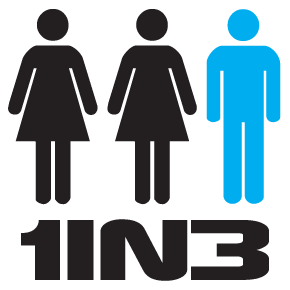Just Asking: Why Doesn’t Henry Call the Women’s Hotline? (USA)
By Jan Elizabeth Brown
I want to talk about two kinds of domestic violence advocates.
Traditional battered women’s advocates, who have spent decades fighting to bring recognition, services and just laws to victims of intimate partner violence, are more and more being called out for their one-sided approach to intimate partner violence. Make no mistake: the use of violence to control and dominate an intimate partner is a horrendously cowardly act, and abusers should be held accountable.
But traditional advocates tend to see domestic violence as rooted in “male privilege.” Barbara J. Hart of the Minnesota Center Against Violence and Abuse captured this on her website:
As long as we as a culture accept the principle and privilege of male dominance, men will continue to be abusive. As long as we as a culture accept and tolerate violence against women, men will continue to be abusive.
There is another kind of advocate for victims of domestic violence, one who gets beyond the gender stereotypes of the traditional advocates and sees not gender or sexual orientation, but a person who has been harmed by a domestic partner. This group recognizes a fact that traditionalist refuse to see: sometimes it is the men who are victims of domestic violence at the hands of their female partners.
With the Violence Against Women Act coming up for reauthorization, it is important to recognize that it is the traditional advocates who continue to play a key role in deciding what is written into this piece of legislation that sets aside billions of federal dollars to be used to combat violence against women. These advocate work hard to turn a blind eye to violence against men. After all, admitting that more than the rare man is abused by a woman would devalue their core belief.
A segment on the Diane Rehm radio talk show featured two traditional advocates, Terry O’Neill, president of the National Organization for Women, and Amy Myers, professor and director of the Domestic Violence Clinic at Washington College of Law. Dr. Janice Crouse, of Concerned Women for America, who does recognize that women can also be guilty of violence, was also a guest. Topic: ”Objections to Reauthorizing the Violence Against Women Act.”
Dr. Crouse addressed some of the problems with VAWA, including an overly broad definition of intimate partner violence and the breakup of marriages that might have been saved because of VAWA’s mandatory arrest mandate. Most important here, Dr. Crouse noted that many studies show that a significant percentage of domestic violence victims are men who were attacked by female partners. Feminist ideology has a stranglehold (no pun intended) on the way victim services are delivered.
When asked if VAWA covers men as well as women, Ms. O’Neil was quick to say that it would. But her “facts” left something to be desired.
Both Ms. Myers and Ms. O’Neill quoted from the same study, National Intimate Partner and Sexual Violence Survey (NIPSVS), but they both failed to mention an important finding of that study:
“One in seven men have experienced severe violence at the hands of an intimate partner, the survey found….”
O’Neil said that “one in five women and one in 71 men” is a victim of domestic violence, while Myers correctly put the number at one in four women. O’Neill was citing the statistics for sexual assault, not intimate partner violence. Myers completely ignored male victims by reporting statistics for female victims or domestic violence and neglecting to mention the same for male victims. Traditional advocates use smoke and mirrors to present their viewpoint, thereby maintaining the status quo.
The NIPSVS study was done the Center for Disease Control. It is important to note that thanks to feminist lobbying the CDC has actually changed the definition of assault so that actions against women that, in the past, would not have qualified as assault now fall into that category.
This is—ironically—another example of how traditional advocates have managed to order the term of the debate. It is a neat trick: first redefine the categories and then cite the resulting statistics that suit their purposes.
Over the years, I have repeatedly seen battered women’s advocates quote statistics in a way that minimizes male victimization. They like to say that male victims are rare, hardly any call their hotlines and to omit or rewrite statistics to fit their agenda. Could it be that male victims don’t know to call a women’s hotline? Could it be that when they do call they are considered abusers and hung up on?
When deciding if or how VAWA is to be reauthorized, members of Congress need to know the truth about female on male violence. Only then can they decide what to do about this bill.
Jan Elizabeth Brown is the Founder and Executive Director of the Domestic Abuse Helpline for Men and Women, a national nonprofit based in Maine that specializes in awareness, support, and services for male victims of intimate partner violence.

